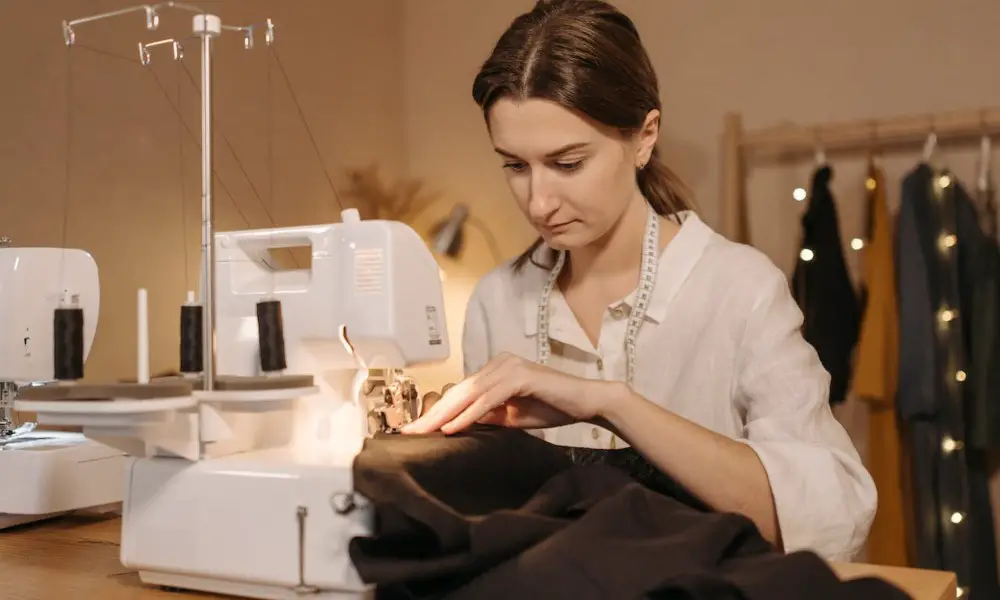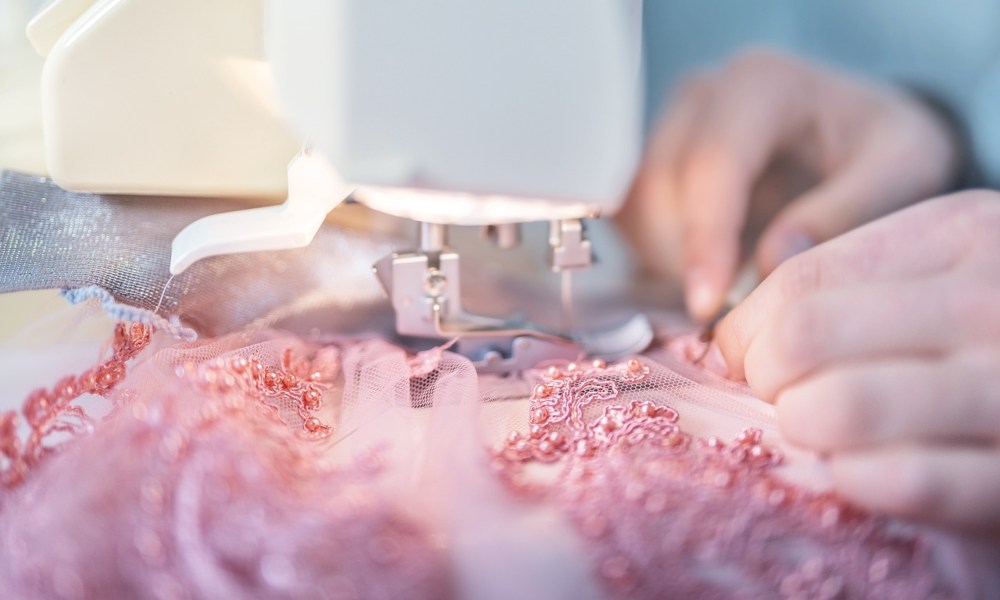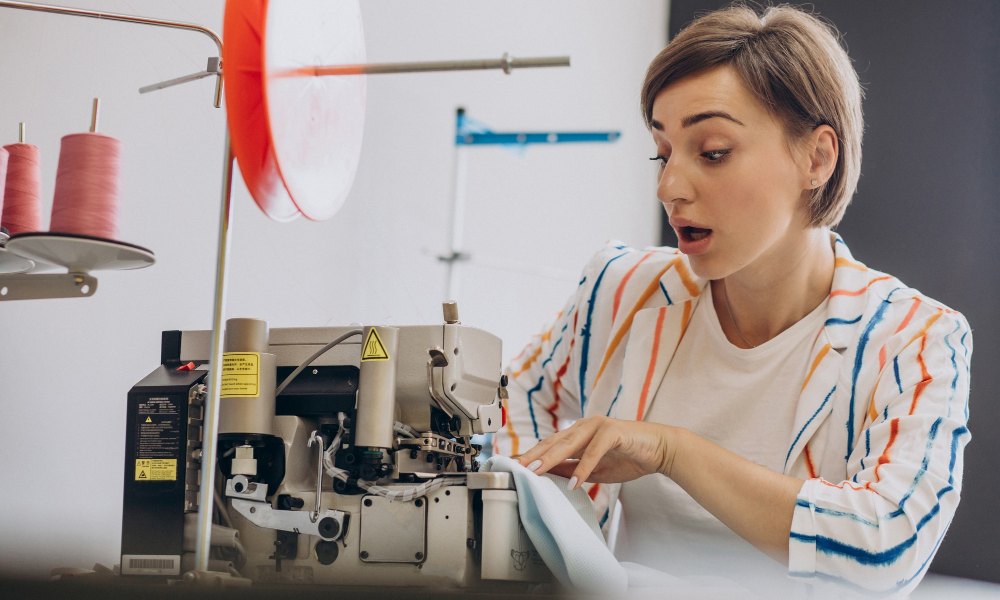Are you frustrated by the recurring issue of your needle breaking while sewing? Many sewers encounter this problem and wonder, “Why does my needle keep breaking?” Understanding the common reasons behind this issue can help you troubleshoot and prevent it from happening in the future.
Many people who enjoy sewing have experienced the frustration of a broken needle. It can be incredibly frustrating when you’re in the middle of a project and your needle suddenly snaps. But why does this happen? There are many reasons why a needle might break during sewing, and it’s important to understand them in order to prevent it from happening in the future.
One of the most common reasons for a broken needle is using the wrong type or size of needle for the fabric you’re working with. For example, if you’re sewing a heavy denim fabric and you’re using a lightweight needle, it’s likely to break. Similarly, if you’re using a needle that’s too large for your fabric, it can cause the needle to bend or break. It’s important to choose the right needle for your fabric to avoid this problem.
Another common cause of broken needles is sewing too fast or with too much force. When you’re sewing at a high speed, it can put a lot of stress on your needle, causing it to break. Similarly, if you’re pushing or pulling your fabric through the machine too forcefully, it can cause the needle to bend or break. It’s important to take your time and sew at a steady pace to avoid this problem.
Understanding the Basics
Sewing Machine Components

Before diving into the reasons why sewing machine needles break, it’s important to understand the components of a sewing machine. A sewing machine consists of several parts that work together to create stitches on fabric. Some of the main components of a sewing machine include:
- Needle: The needle is a slender, pointed tool that penetrates the fabric to create stitches.
- Needle clamp: The needle clamp holds the needle in place and is responsible for moving the needle up and down.
- Needle bar: The needle bar is a metal rod that moves the needle up and down.
- Presser foot: The presser foot is a metal piece that holds the fabric in place and applies pressure to it while sewing.
- Needle plate: The needle plate is a metal plate with a small hole that the needle passes through to create stitches.
- Bobbin: The bobbin is a small spool of thread that sits underneath the needle plate and holds the bottom thread.
- Bobbin tension: The bobbin tension regulates the amount of thread that is pulled from the bobbin.
Types of Needles
Different types of needles are designed for different fabrics and sewing techniques. Using the wrong needle can cause the needle to break. Here are some of the most common types of needles:
- Universal needle: A universal needle is a versatile needle that can be used on a variety of fabrics, including woven and knit fabrics.
- Specialty needles: Specialty needles are designed for specific fabrics or techniques. For example, denim needles are designed for sewing through thick fabrics like denim, while leather needles are designed for sewing through leather and other heavy materials.
- Embroidery needle: Embroidery needles have a larger eye and a slightly rounded tip, making them ideal for machine embroidery.
- Twin needle: A twin needle has two needles attached to a single shank and is used to create parallel rows of stitching.
- Felting needles: Felting needles are used for needle felting, a technique that involves punching wool fibers into fabric to create a design.
By understanding the basics of a sewing machine and the different types of needles available, you can better troubleshoot issues like needle breakage.
Common Causes of Needle Breakage
Sewing machine needles can break for various reasons, causing frustration and wasted time. However, knowing the common causes of needle breakage can help prevent it from happening in the future. Here are some of the most common causes of needle breakage:
Incorrect Needle Size
Using the wrong needle size for the fabric being sewn is a common cause of needle breakage. A needle that is too small for the fabric can bend and break when trying to penetrate through the material. On the other hand, a needle that is too large for the fabric can create large holes, leading to skipped stitches, poor stitch quality, and breakage. It is essential to match the needle size to the fabric weight and fiber content.
Improper Threading
Improper threading of the sewing machine can also cause the needle to break. If the thread is not threaded correctly, it can cause the thread to tangle, resulting in the needle breaking. Therefore, it is essential to follow the threading instructions in the machine manual carefully.
Tension Issues
Tension issues can also cause the needle to break. If the thread tension is too tight, it can cause the needle to bend and break. On the other hand, if the thread tension is too loose, it can cause the thread to tangle, resulting in the needle breaking. Therefore, it is essential to adjust the thread tension correctly for the fabric being sewn.
In addition to the above causes, there are other reasons why a needle may break, such as sewing over pins, using a damaged needle, using a dull needle, a bent needle, or a needle that is not inserted correctly. It is essential to check for these issues and address them accordingly to prevent needle breakage.
In conclusion, understanding the common causes of needle breakage can help prevent it from happening in the future. By using the correct needle size, threading the machine correctly, and adjusting the thread tension, the chances of needle breakage can be significantly reduced.
Specific Situations
Machine Embroidery

Machine embroidery is a popular technique that can produce intricate designs on fabric. However, it can also cause the needle to break if not done correctly. One common cause of needle breakage during machine embroidery is using the wrong type of needle. Embroidery needles have a larger eye and a slightly rounded tip to prevent snagging on the fabric. Using a regular sewing machine needle can cause the needle to break due to the increased friction between the needle and the fabric.
Another cause of needle breakage during machine embroidery is using the wrong type of thread. Embroidery thread is thicker than regular sewing thread, and using the wrong thread can cause the needle to break due to the increased tension on the needle. It’s important to use the correct thread for the embroidery design and to adjust the tension on the machine accordingly.
Using the wrong embroidery foot can also cause needle breakage. Embroidery feet are designed to hold the fabric down while the needle is moving, preventing it from shifting and causing the needle to break. Using the wrong foot can cause the fabric to shift, putting extra pressure on the needle and causing it to break.
Using the Twin Needle
Using a twin needle is a great way to create decorative stitching on fabric. However, it can also cause the needle to break if not done correctly. One common cause of needle breakage when using a twin needle is using the wrong size needle. Twin needles come in different sizes, and using the wrong size can cause the needle to break due to the increased pressure on the needle.
Another cause of needle breakage when using a twin needle is using the wrong type of fabric. Knit fabrics are more stretchy than woven fabrics, and using a twin needle on a knit fabric can cause the needle to break due to the increased tension on the needle. It’s important to use the correct type of needle and fabric for the project.
Finally, using the wrong thread can also cause needle breakage when using a twin needle. It’s important to use the correct type of thread for the project and to adjust the tension on the machine accordingly. Using the wrong thread can cause the needle to break due to the increased tension on the needle.
In summary, machine embroidery and using a twin needle can cause needle breakage if not done correctly. It’s important to use the correct type of needle, thread, and fabric for the project, and to adjust the tension on the machine accordingly. Using the wrong embroidery foot or twin needle size can also cause needle breakage.
Prevention and Solutions
Correct Needle and Thread Selection
One of the main reasons why a sewing machine needle keeps breaking is using the wrong needle and thread for the fabric being sewn. It is essential to select the correct needle size and type based on the fabric being used. For example, a universal needle is suitable for woven fabrics, while a ballpoint needle is better for knit fabrics.
It is also important to choose the right thread for the needle and fabric. A thicker thread requires a larger needle, while a thinner thread needs a smaller needle. Using the correct needle and thread combination will help prevent needle breakage and ensure a smooth stitch.
Proper Machine Maintenance
Proper machine maintenance is crucial in preventing needle breakage. Regularly cleaning and oiling the machine can help prevent buildup and ensure smooth operation. It is also important to check the needle plate and presser foot for any damage or burrs that can cause the needle to break.
Checking the needle clamp and bar for any looseness or damage is also important. The needle should be securely held in place to prevent it from breaking during operation. Additionally, checking the tension of the bobbin thread and needle thread can help prevent needle breakage and skipped stitches.
In summary, preventing needle breakage requires selecting the correct needle and thread for the fabric being sewn and proper machine maintenance. By taking these steps, the chances of needle breakage can be significantly reduced, and the sewing experience can be more enjoyable.
Frequently Asked Questions
How can I prevent my needle from breaking?
To prevent needle breakage, make sure to use the correct needle size for the fabric you are using. A needle that is too small or too large can cause breakage. Additionally, always use high-quality needles, and replace them frequently. Check the needle regularly for any signs of damage or bending. Proper threading of the machine and tension adjustment can also help prevent needle breakage.
What are the common causes of needle breakage?
Common causes of needle breakage include using the wrong needle size, using a damaged or bent needle, improper threading of the machine, incorrect tension adjustment, sewing over pins, sewing through thick layers of fabric, and hitting the needle plate or presser foot with the needle.
What should I do if my needle breaks while sewing?
If your needle breaks while sewing, stop the machine immediately and turn off the power. Remove any broken pieces of the needle from the machine and replace it with a new one. Inspect the machine for any damage that may have been caused by the broken needle before resuming sewing.
Why does my sewing machine needle hit the plate?
If your sewing machine needle is hitting the plate, it may be due to incorrect threading of the machine, incorrect needle insertion, incorrect needle size, or incorrect tension adjustment. Ensure that the machine is threaded correctly, the needle is inserted correctly, the correct needle size is being used, and the tension is set properly.
What is the remedy for lower thread breaks?
Lower thread breaks can be caused by a variety of factors including incorrect threading of the machine, incorrect bobbin insertion, incorrect bobbin tension, or using low-quality thread. Ensure that the machine is threaded correctly, the bobbin is inserted correctly, and the bobbin tension is set properly. Use high-quality thread and ensure that the thread is not tangled or caught on anything.
What are some tips for replacing a broken needle on a sewing machine?
When replacing a broken needle on a sewing machine, ensure that the machine is turned off and unplugged. Remove any broken pieces of the needle from the machine and dispose of them safely. Check the machine for any damage that may have been caused by the broken needle. Insert the new needle correctly and ensure that it is the correct size for the fabric being used. Finally, thread the machine correctly and adjust the tension as needed.
Remember to always take the necessary precautions when working with sewing machines and needles to avoid any accidents or injuries.
Conclusion
In conclusion, a broken needle can be a frustrating experience for any sewist. However, there are many solutions to this common problem. By following the tips outlined in this article and ensuring that your machine is properly maintained, you can minimize the risk of needle breakage and keep your sewing projects on track.
One of the most important things to remember is to always use the correct needle for your fabric. Using a needle that is too small or too large can cause it to break or bend, leading to skipped stitches and poor stitch quality. Additionally, be sure to check your needle regularly for signs of wear and replace it at the first sign of damage.
Another important factor to consider is the condition of your machine. A poorly maintained machine can cause a variety of issues, including needle breakage. Be sure to clean and oil your machine regularly and check the tension and thread path to ensure that everything is working properly.
Finally, it’s important to practice good sewing habits to minimize the risk of needle breakage. Avoid sewing over pins, which can cause the needle to break or damage your machine. Additionally, be sure to use the correct presser foot for your project and adjust the tension and stitch length as needed.
By following these tips and practicing good sewing habits, you can minimize the risk of needle breakage and enjoy a more seamless sewing experience.
What are some strategies you have found helpful in preventing your sewing needle from breaking? Share your tips and experiences in the comments below!
***
Main image: Freepik




